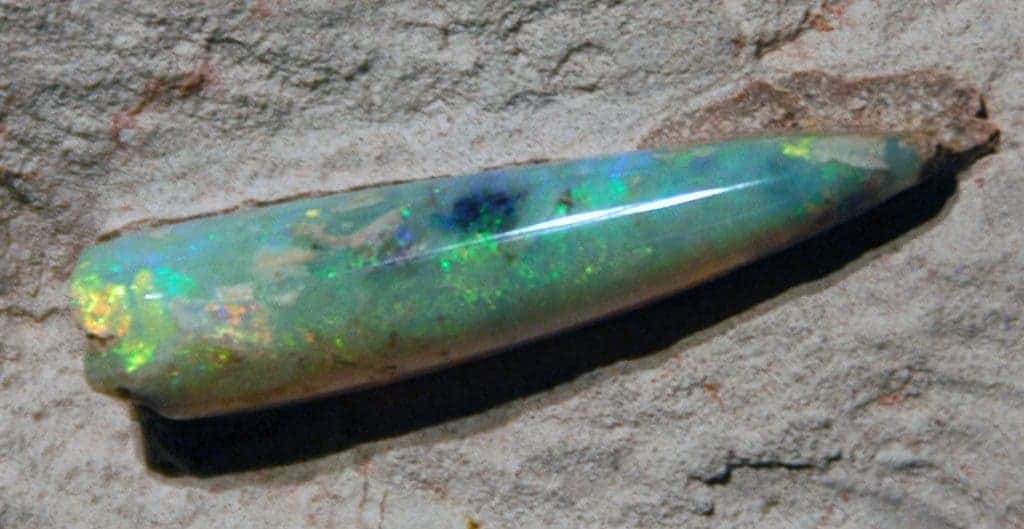
Belemnites were extinct cephalopods with a squid-like body and a solid, calcareous, internal, elongated, bullet-shaped skeleton. They lived throughout the entire Mesozoic, from the 252 to 77 million years ago. They have this very distinctive shape, and this particular specimen was opalized.
Basically, its calcium carbonate shell was slowly replaced by opal. Opal is a hydrated amorphous form of silica, which crystallizes by combining silicon dioxide with water. In this case, opal can form if the silica fills in space left by rotting shells or bones, creating a mold of the original structure. If the conditions are right for opal formation than the fossil can become opalized. Opalized fossils are very rare, being one of the most cherished finds for fossil hunters.
This fossil was found in Australia, where some of the world’s biggest opals can be found. South Australia’s Coober Pedy Opal Field is famous for having fossils that have been replaced by precious opal (hydrous silica – SiO2·nH2O). Recovered opalised fossils from Coober Pedy include bivalves, gastropods, belemnites, crinoids, and even dinosaurs (ichthyosaurs, and plesiosaurs).






